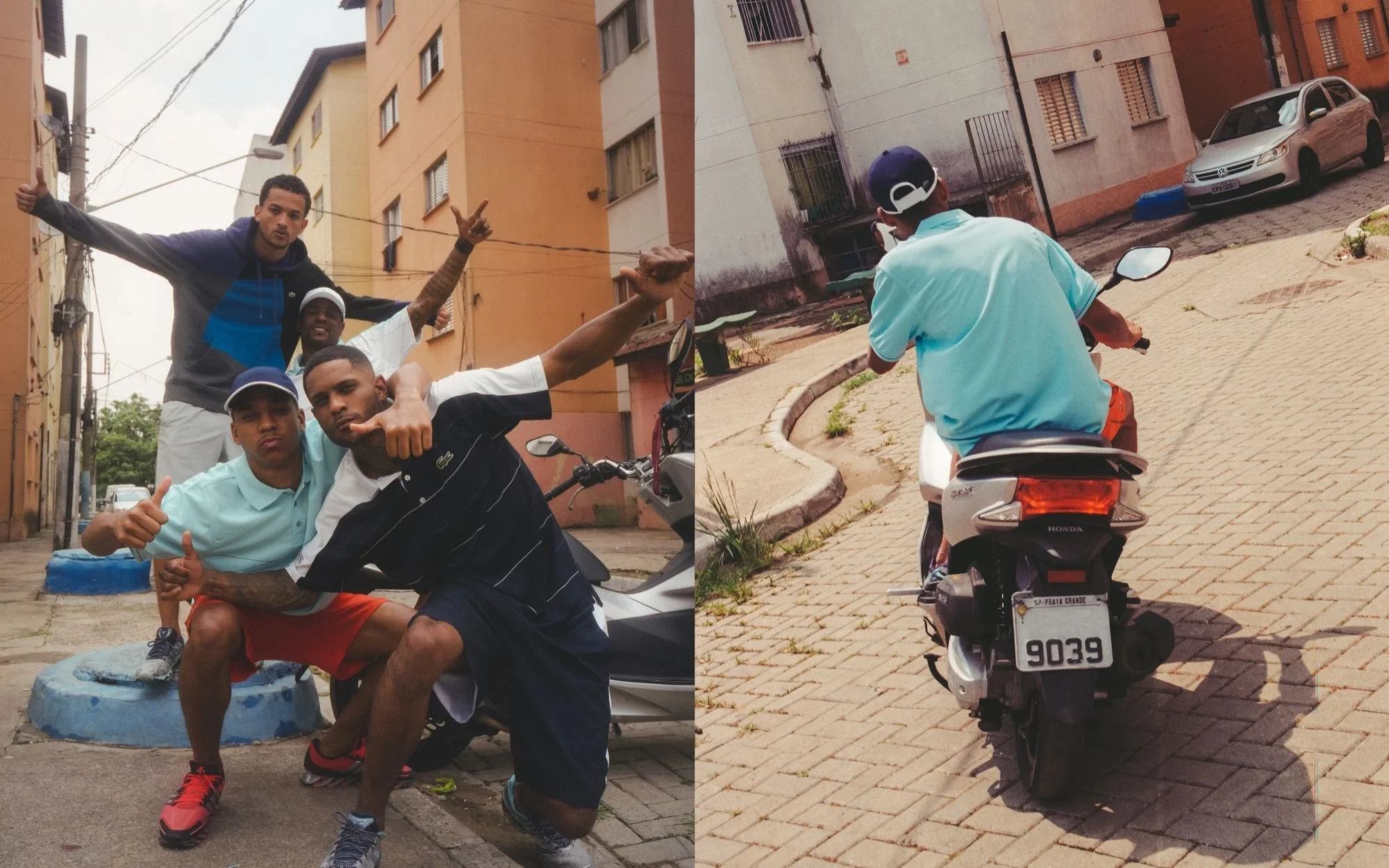How Youth and Football is Evolving São Paulo’s Pop-culture Scene – Through Amanda Adàsz
On the outskirts of São Paulo, in Brazil’s favela neighborhoods, football is ingrained in every street and corner.
“Football shirts were always street style,” emerging Brazilian photographer and creative director Amanda Adàsz said in an interview with NSS Magazine. Her favorite jersey is Brazil’s from the 1990 FIFA World Cup, where Brazil made it to the last 16 teams and scored three wins against Costa Rica, Sweden, and Scotland.
Adàsz is the lens through which the Brazilian streetwear scene is being amplified more than ever before. In the favelas, the art scene flourishes with dance, funk music, and graffiti. Funk’s popularity in Brazil is closely tied with the recent popularity of European sports brand Lacoste, whose resell prices have jumped to extremes. Adàsz served as the photographer for a Lacoste editorial on the edge of São Paulo to feed the “Lacosteiros” – avid Brazilian Lacoste fans.
Amanda Adàsz for Lacoste
Lacoste only describes a small portion of the Brazilian streetwear scene. Here, the favela and sports cultures join forces to create a unique blend of tradition and streetwear. Adàsz called Brazilian football culture the “bridge between these two different worlds.” In directing the Les Vêtements de Football editorial PLAYERS in 2018, models sported jerseys and sneakers in front of a favela backdrop, shot in vibrant tones. Adàsz claimed the inspiration for all her photography and styling was based on her own experiences of “where we live and how we live in Brazil.”
“We try to capture all the essence and energy that exists here, the realness of the people that really live here.”
Adàsz has also collaborated in editorials with Nike and ASICS, and she cited other brands like HIGH Company as the rage in today’s Brazil. In addition to sportswear, surf, and skate styles that compliment Brazil’s beaches and seashores have risen to prominence. Ultimately, Adàsz credits underground youth movements as the ambassadors for new styles in cities like São Paulo.
It’s the sheer power and vitality of these youth movements that Adàsz aimed to capture in her project titled “Subcultural Youth.” Portraits of Adàsz’s friends and still shots of Marlboros, skateboards, and beer marked the carefree energy of São Paulo’s nightlife. Shot almost entirely in flash, dozens upon dozens of photos show people wearing trendy sunglasses, flaunting new hairstyles, and DJ-ing, swallowed in backgrounds of graffiti. In “Subcultural Youth,” youth finds its purpose as not only a powerful symbol of individuality, but at the root, an unstoppable force enriching Brazilian pop culture and representing Brazil on the world stage. Adàsz commented to Hypebeast that “[the subjects] are all my friends together, each one very different from the other, but they complete each other.”
Adàsz continues to capture her love for youth culture in a series of photos titled “Smells Like Teen Spirit” with stylist Juliana Santos, who roped in skate and punk-type clothing. The project is, at its core, raw, and offers a candid glimpse into love and friendship among São Paulo’s youth. Like “Subcultural Youth,” Adàsz shot almost all of the photos with flash – reminiscent of 90s-style photography. Subdued tones of blue, green, pink, and orange wash the photos with intimacy and create a secrecy from the outside world. “I believe that we, the youth, manage to pass on a unique artistic vision in each project because we literally live what we are trying to represent,” said Vitor Yudi, a subject in “Smells Like Teen Spirit.” The project sends a clear message to young creatives in Brazil: keep the culture moving forward, as representatives to Brazil and the rest of the world.
BY ELAINA LI





